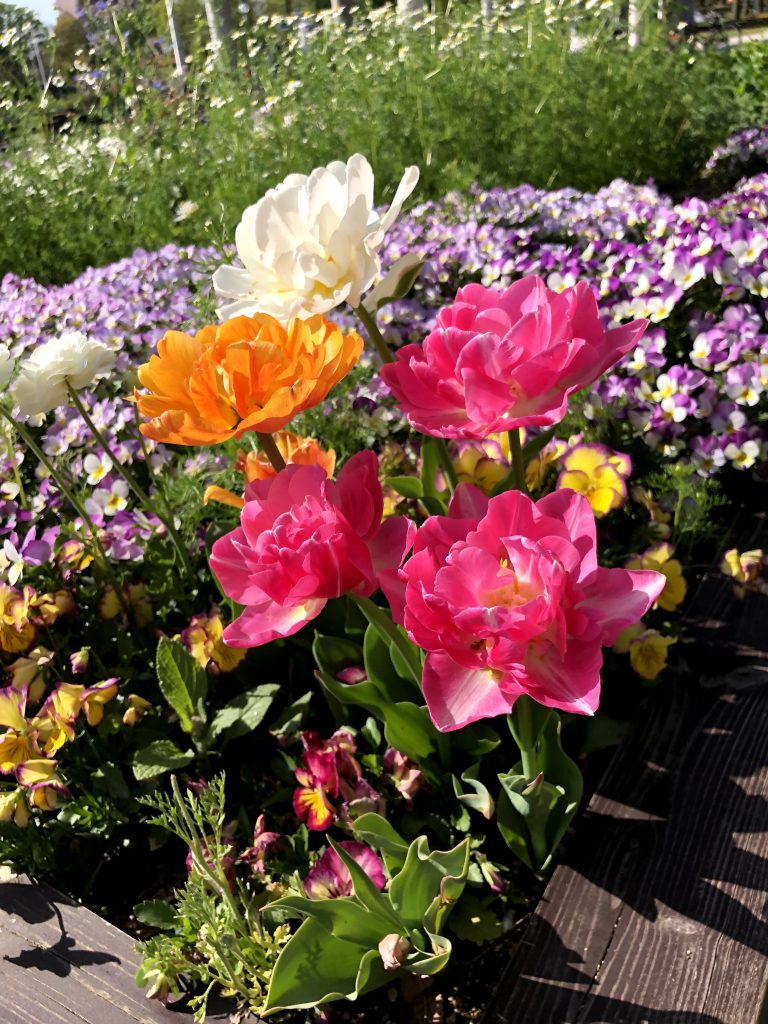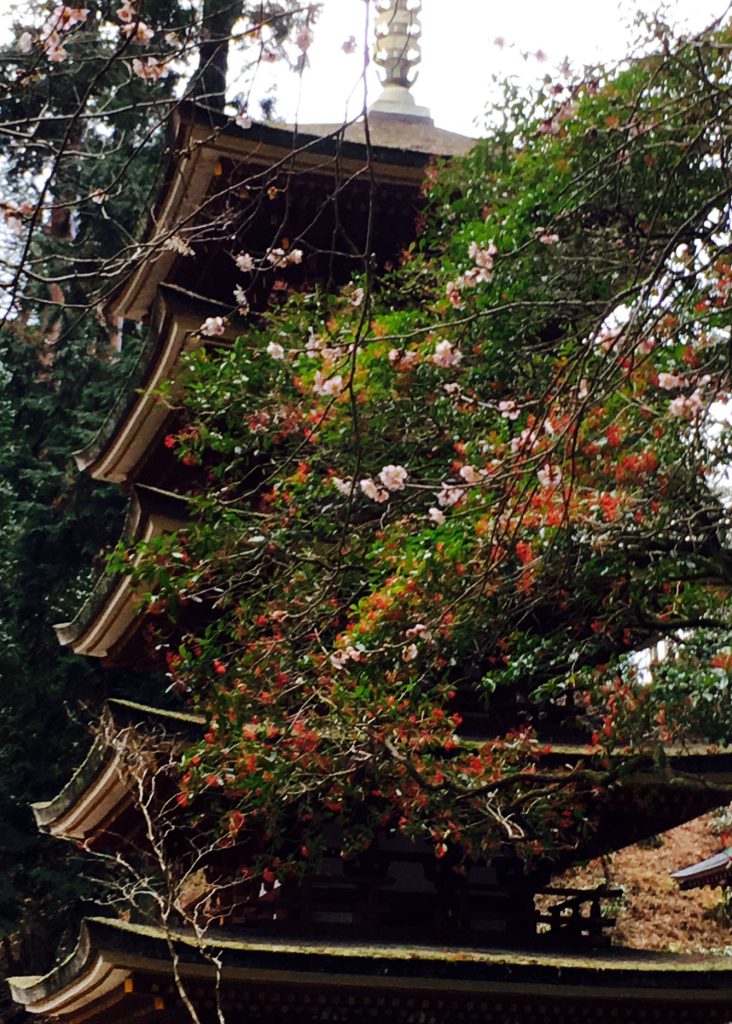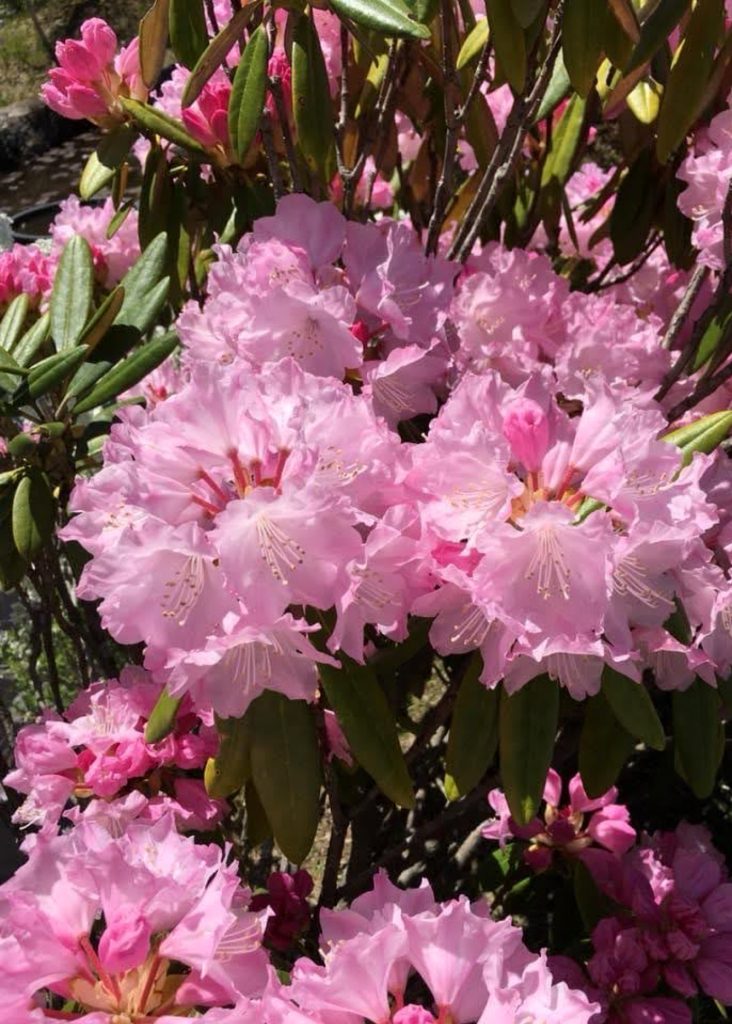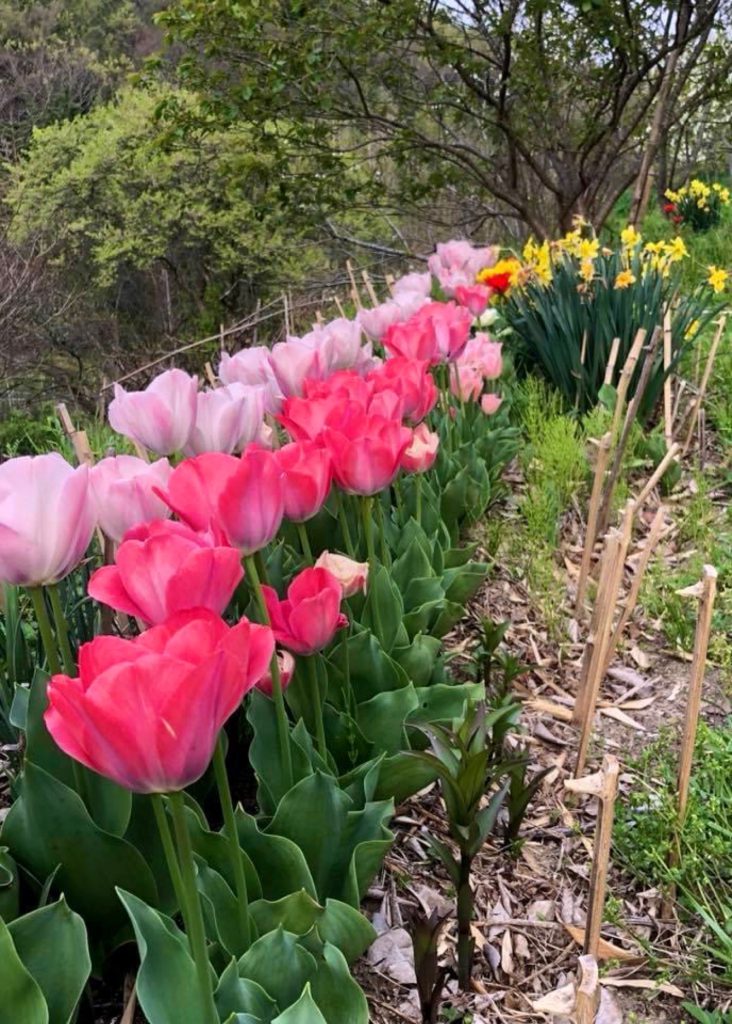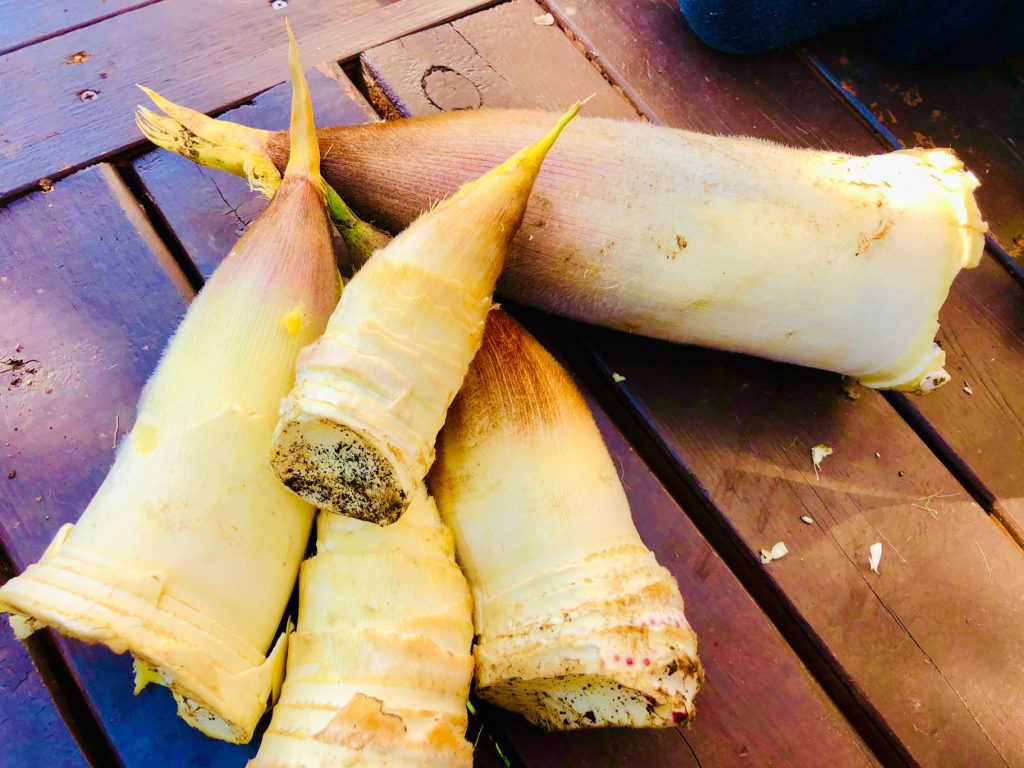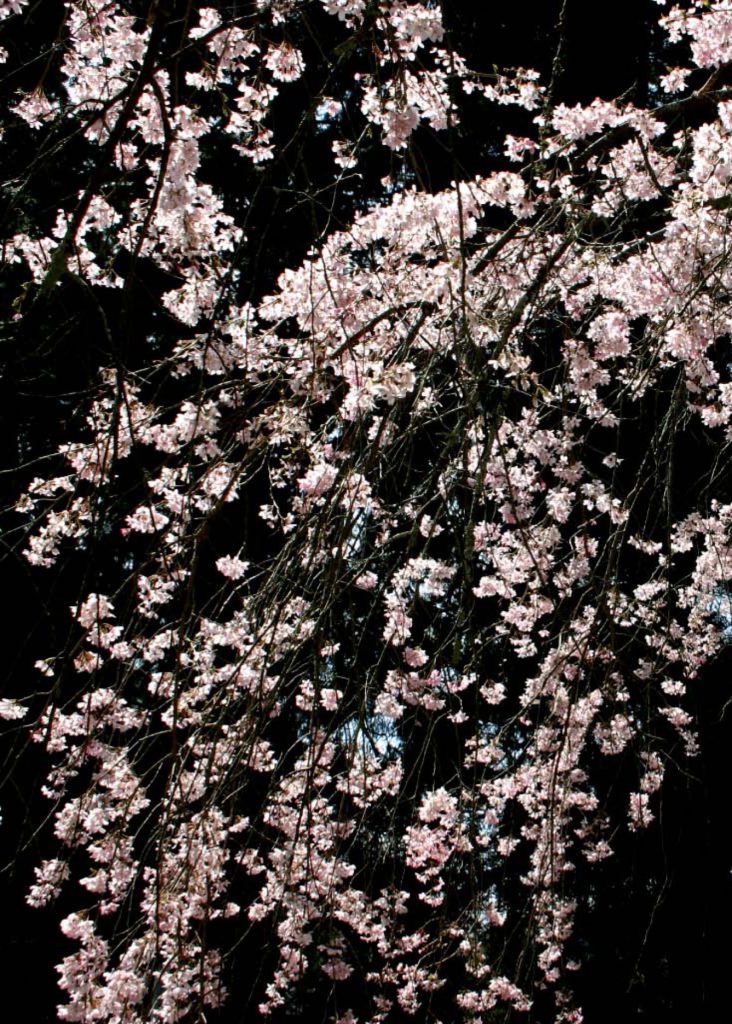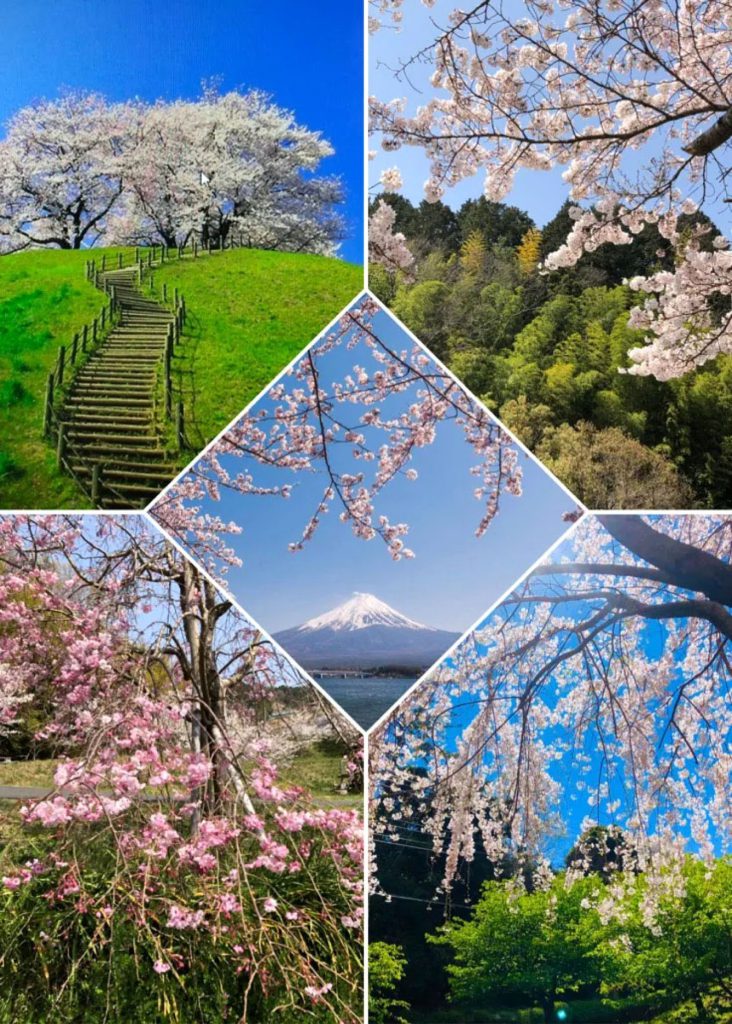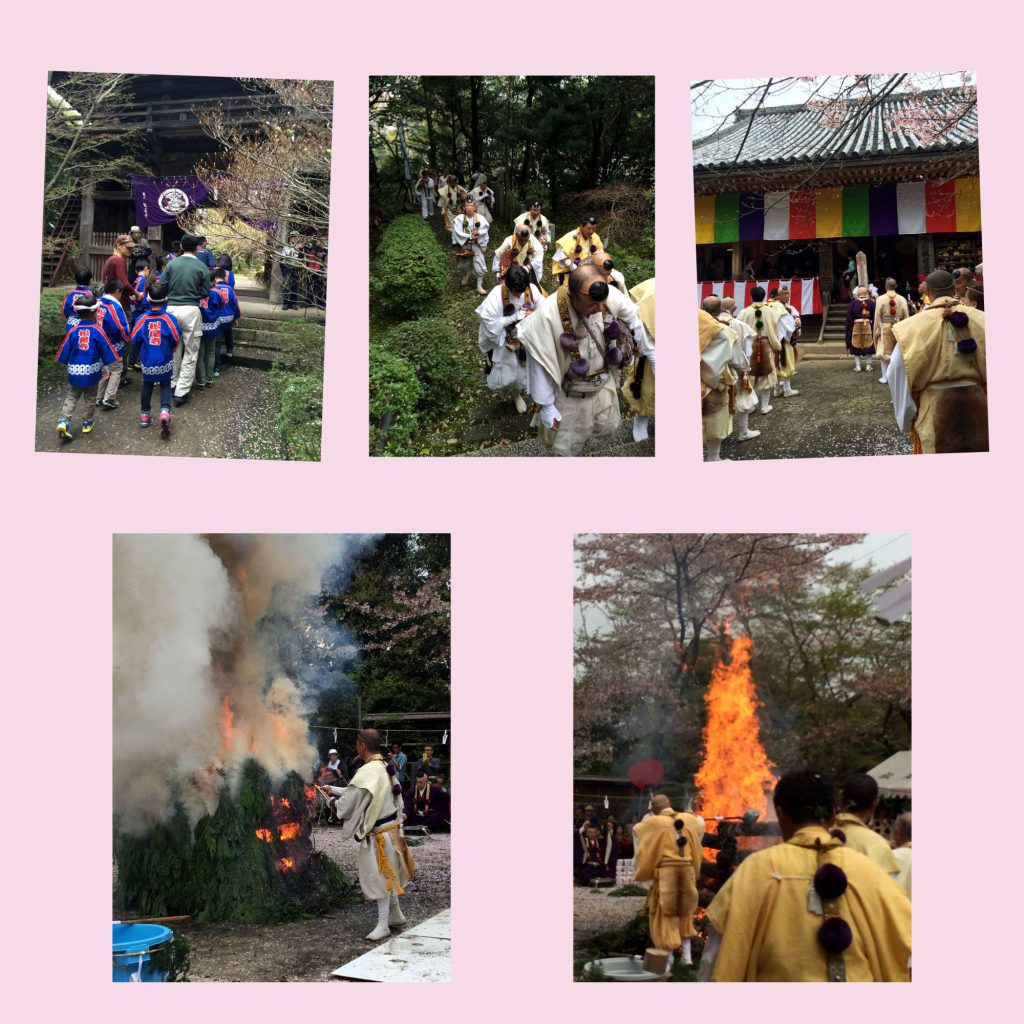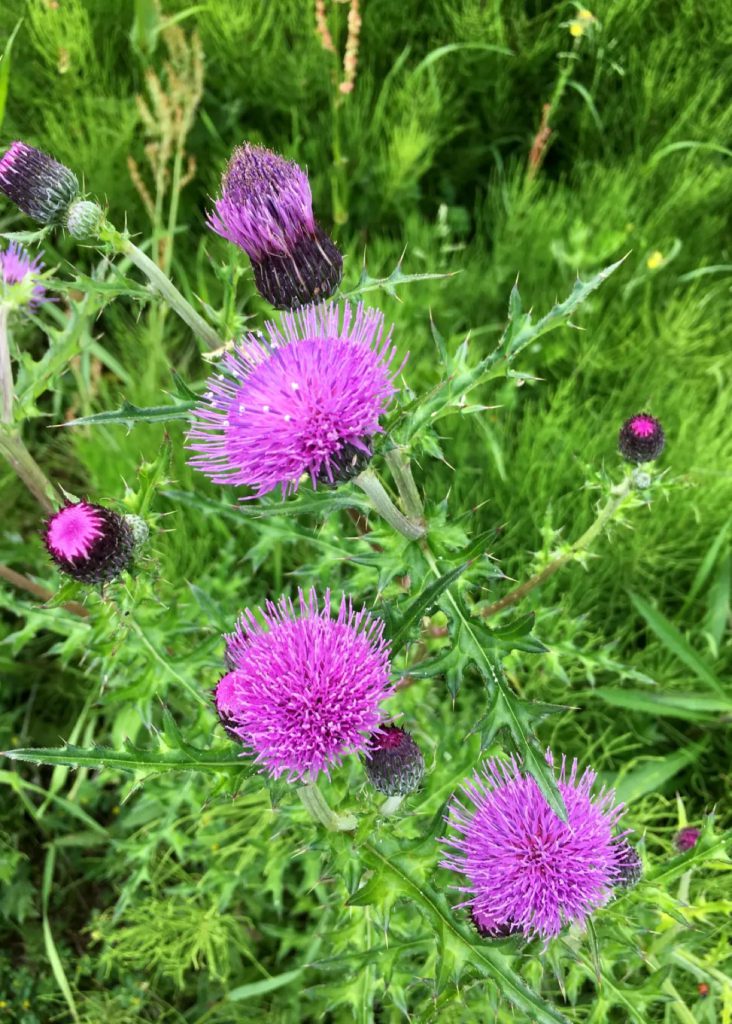
♭♭♭ あざみの歌 ♭♭♭
Walking along the village road, Azami flowers (thistle flowers) are in full bloom. The song that I hummed involuntarily was “The mountains have the melancholy of the mountains, and the sea has the sadness of the sea”. This song known as “Azami no Uta,” was released in 1949 on NHK Radio Kayo. This song, written by Hiroshi Yokoi and composed by Hideaki Yasushi, was a big hit as soon as Hisao Ito had sang it. A monument is built in Kirigamine Yashimagahara Marsh, Nagano Prefecture, which is said to have been written by “Azami no Uta” at an altitude of about 1632m. It seems that the etymology of thistle comes from “Azamu” in Okinawa, and it grows naturally everywhere in Japan. Most of them are Nihon-Azami (Cirsium japonicum). You can eat any kind of Azami, but especially the miso-zuke of the root of Mori-Azami is sold under the name of “Yamagobo”.
里道を歩いていると目にも鮮やかにアザミの花が咲いています。思わず口ずさんだのが「山には山の愁いあり 海には海のかなしみや」の歌です。「あざみの歌」で知られるこの歌は1949年にNHKラジオ歌謡で発表されました。横井弘作詞、八洲秀章作曲によるこの歌は、伊藤久男が歌うや大ヒット。『あざみの歌』が作詞されたという、標高約1632mの長野県霧ヶ峰八島ヶ原湿原には歌碑が建てられています。アザミの語源は沖縄の「あざむ」からきたそうで、日本のいたるところに自生しています。その大半はノアザミです。アザミはどの種類でも食べられますが、特にモリアザミの根の味噌漬けは「ヤマゴボウ」という名で売られています。

